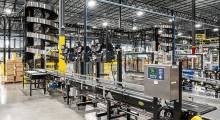Despite lingering effects of the COVID-19 pandemic, economic constraints, and geopolitical conflict, global adoption of robotics is continuing to grow. The new World Robotics 2023 Industrial Robots and Service Robots report said that 553,052 industrial robots were installed in factories around the world in 2022 – a year-over-year growth rate of 5%.
By region, 73% of all newly deployed robots were installed in Asia, 15% in Europe, and 10% in the Americas, according to the International Federation of Robotics (IFR).
“The world record of 500,000 units was exceeded for the second year in succession,” stated Marina Bill, president of the IFR, in a release. “In 2023, the industrial robot market is expected to grow by 7% to more than 590,000 units worldwide.”
Asia still leads the robotics world
China is by far world's largest market, said the IFR. In 2022, annual installations of 290,258 units replaced the previous record of 2021 by growth of 5%.
“This latest gain is remarkable since it even tops the 2021 result that was a 57% jump compared to 2020,” said the organization. “To serve this dynamic market, domestic and international robot suppliers have established production plants in China and continuously increased capacity. On average, annual robot installations have grown by 13% each year (2017-2022).”
The operational stock in China passed the 1 million mark in 2021 and the 1.5 million-unit market in 2022, with 22% growth, reported the IFR. It is the only country so far to reach that level, driven mainly by its electrical and electronics industry, followed by automotive and metals and machinery. While the Chinese economy may be slowing down, many 2022 orders are still shipping this year.
Robot installations in Japan were up by 9% to 50,413 units, exceeding the pre-pandemic level of 49,908 units in 2019. The peak level remains at 55,240 units in 2018. The country ranks second to China in size of market for industrial robots, noted the IFR.
Annual installations gained 2% on average per year from 2017 to 2022. Japan is the world´s predominant robot manufacturing country, with a market share of 46% of the global robot production.
The IFR added that Japanese robot suppliers have increased their production capacity and have established sites in China and elsewhere, even as domestic production grew by 4% on average per year.
The market in the Republic of Korea rose by 1%, with installations reaching 31,716 units in 2022. This was the second year of marginal growth, following four years of declining installations, said the IFR. South Korea remains the fourth largest robot market in the world, following the U.S., Japan, and China.
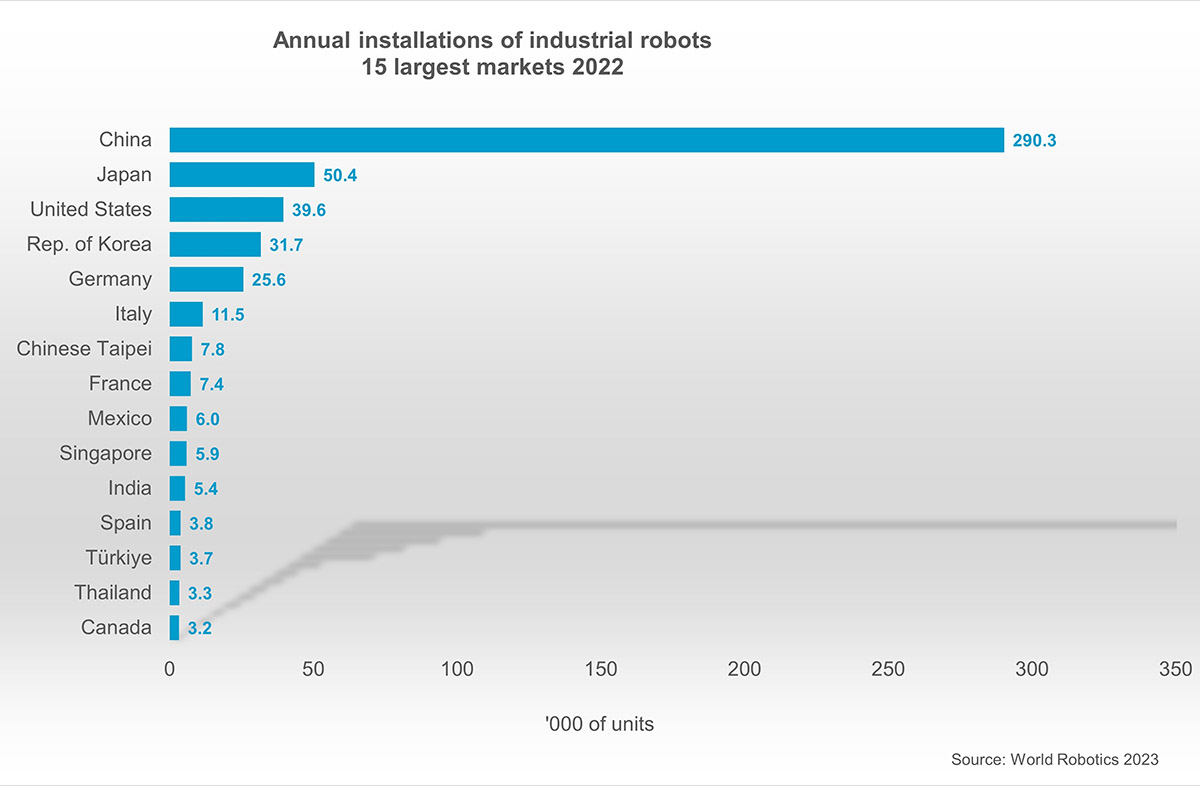
Europe still a major market
The European Union remains the world's second largest market, with 70,781 unit installations or 5% growth in 2022, explained the IFR. Germany is one of the top five adopters worldwide, with a market share of 36% within the EU. Germany's installations went down by 1% to 25,636 units.
Italy follows with a market share of 16% within the EU, as installations grew by 8% to 11,475 units. The third-largest European market, France, recorded a regional market share of 10% and gained 13%, installing 7,380 units in 2022.
“In France, annual installations have grown by 8% on average each year since 2017,” said Bill. “The main customer is the automotive industry, with a share of 22% of the installations, but the metal industry almost closed the gap and also held a share of 22% in 2022.”
The IFR said it expects about 7,000 installations per year in the French robotics market from 2024 onward. It added that the French government and automotive industry have made relatively few new investments.
In the post-Brexit U.K., industrial robot installations were up by 3% to 2,534 units in 2022. This is less than a tenth of Germany's sales, the IFR observed.
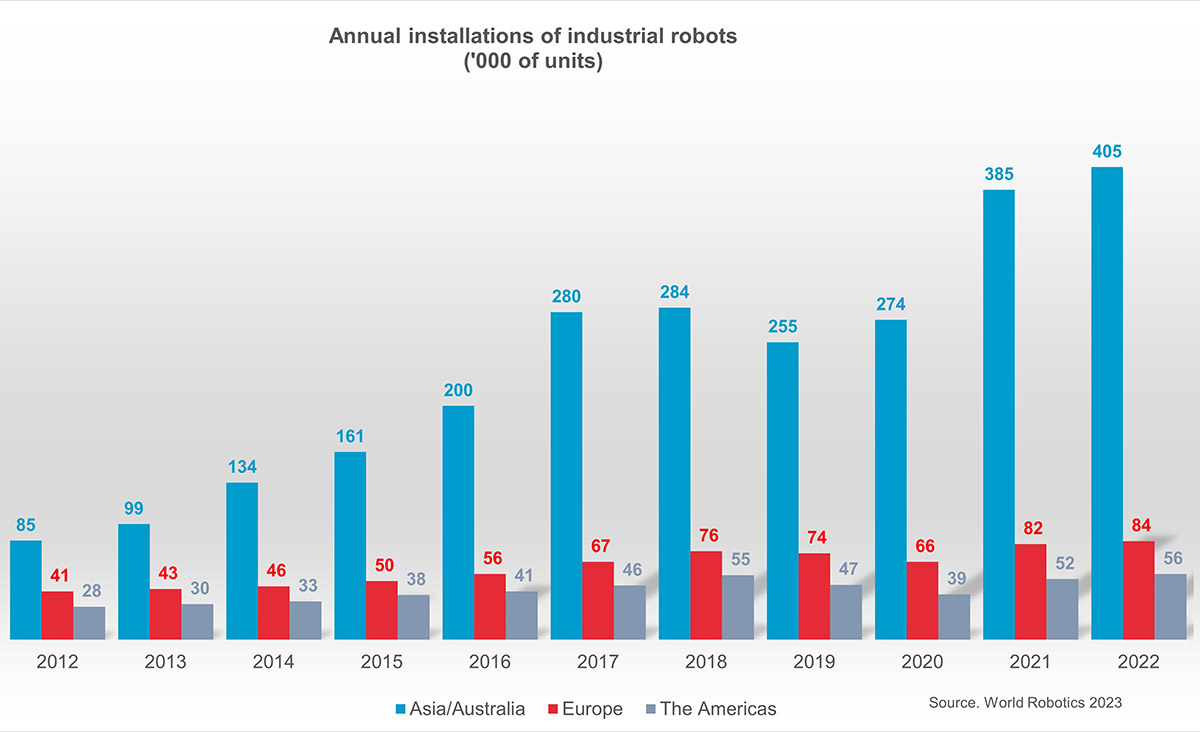
The Americas reach new peaks
In the Americas, installations were up 8% to 56,053 installations in 2022, surpassing the 2018 peak level of 55,212 units. The U.S., the largest regional market, accounted for 71% of the installations in the Americas in 2022.
“On a global scale, the U.S. accounted for 7% of robot installations in 2022, placing the U.S. third in the world following China and Japan,” Bill said.
Robot installations in the U.S. were up by 10% to 39,576 units. This was just shy of the peak level of 40,373 units achieved in 2018, said the IFR.
The main growth driver was the automotive industry, whose installations increased by 47% to 14,472 robots. That industry's share has now grown back to 37%, followed by the metal and machinery industry at 3,900 units and the electrical/electronics industry at 3,732 units.
U.S. installations in the metal and machinery industry declined by 7%, while electrical/electronics installations were up by 26%, said the IFR.
The two other major markets are Mexico, where installations grew by 13% to 6,000 units, and Canada, where demand dropped by 24% to 3,223 units. This was the result of lower demand from the automotive industry, still the strongest adopter, the IFR noted.
Brazil is an important production site for motor vehicles and automotive parts, according to the IFR. The International Organization of Motor Vehicle Manufacturers (OICA) reported an output of 2.4 million vehicles in 2022. This showed the huge potential for automation in the country, the IFR said.
Annual installation counts grew slowly, with cyclical ups and downs, said the IFR. In 2022, 1,858 robots were installed in Brazil. This was 4% more than in the previous year, it said.
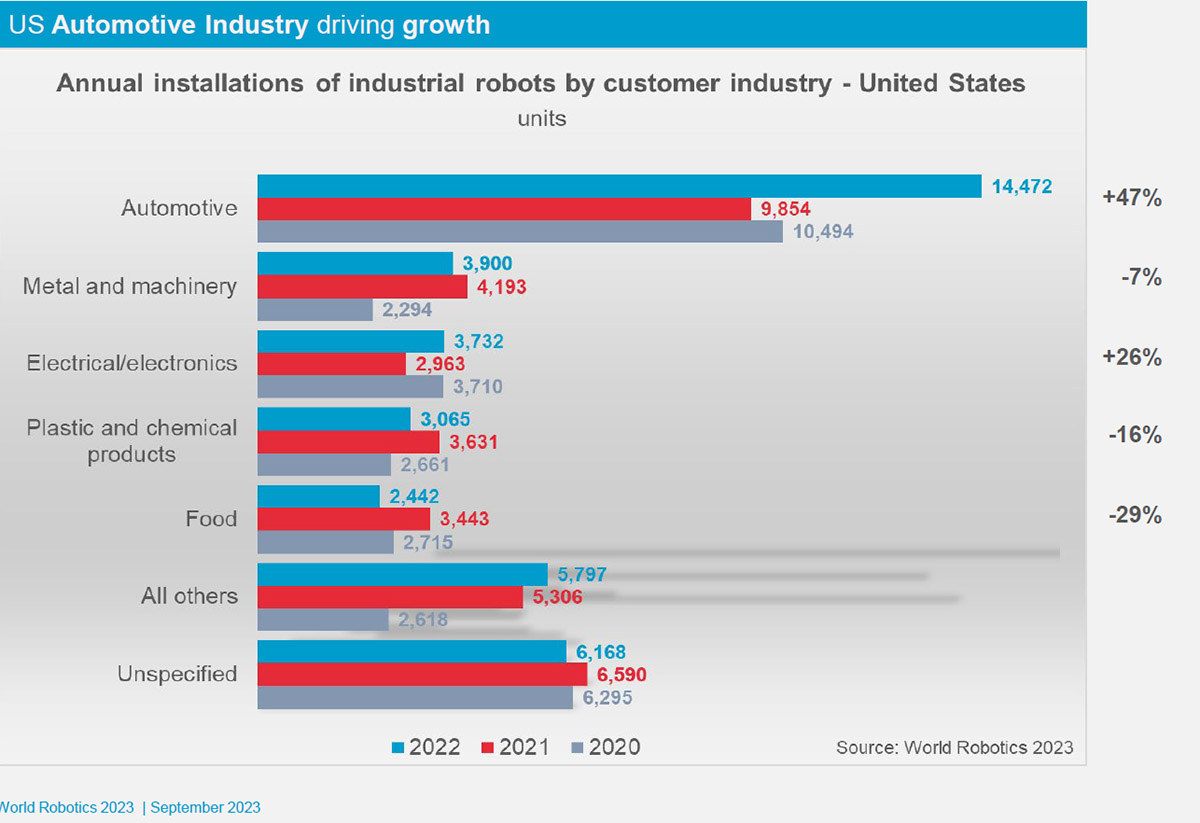
IFR gives bullish outlook
“The year 2023 will be characterized by a slowdown of the global economic growth,” said the IFR. “Robot installations in 2023 are not expected to follow this pattern.”
“There is no indication that the overall long-term growth trend will come to an end soon; rather, the contrary will be the case,” it concluded. “The mark of 600,000 units installed per year worldwide is expected to be reached in 2024.”
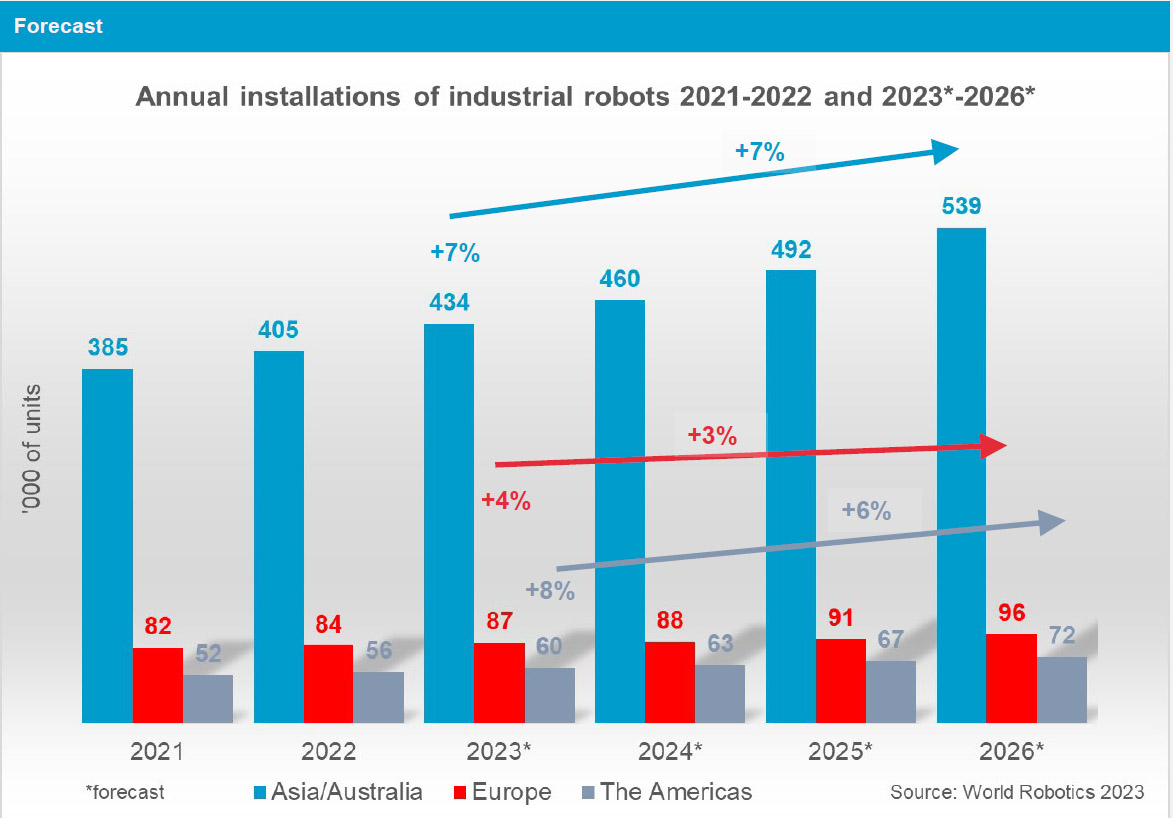
Labor shortages, inflation, and high interest rates continue to pose challenges. While order volumes for robotics in the U.S. declined in the first two quarters of 2023, a larger order backlog has enabled production to remain at a high level this year, said the IFR.
It added that federal support such as the Chips and Science Act, the Infrastructure and Jobs Act, and the Inflation Reduction Act is leading to new production capacity and demand in the electronics, automotive, metal, and pharmaceuticals industries.
Orders for World Robotics 2023 Industrial Robots and Service Robots and related IFR content can be placed online.
Article topics
Email Sign Up





